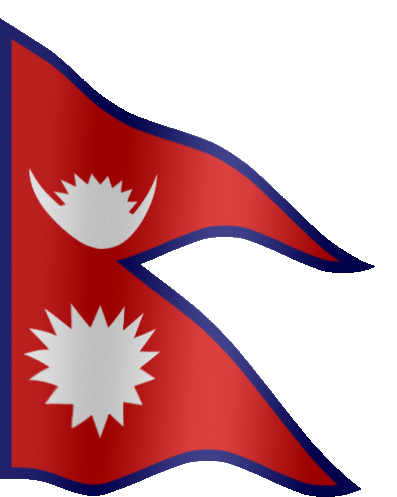Features of National Botanical Garden
Botanical Information and Exhibition Center: It is located beside the garden’s main entrance gate and housing a museum for education, research and display.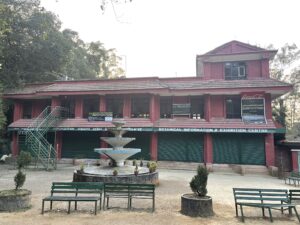
Plant Conservatories: The garden has a variety of conservatories for preserving particular plant species or groups, such as (1) Bonsai House, (2) Cactus & Succulent House, (3) Cyclamen House, (4) Fern House, (5) Orchid House, (6) Ornamental Plant House, (7) Plant Propagation Houses, and (6) Tropical House.
Tropical house is the largest and major conservatory inside the garden, and it is located adjacent to the Coronation Pond. It was built in 1975 AD (2031 BS), standing 12 m tall and covering an area of 294 m2. It consists of plants found in tropical region like Bauhinia vahlii, Butea buteiformis, B. monosperma, Calotropis gigantea, Cassia fistula, Cycas pectinata, Dalbergia latifolia, Rauvolfia serpentina, Santalum album, Shorea robusta, Withania somnifera, etc.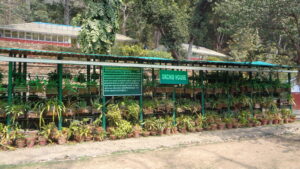
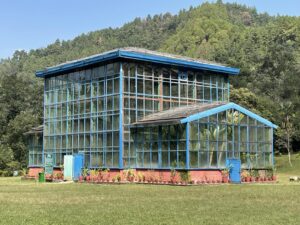
Seed Bank: It is located on the opposite side of the street from the administrative building. It is one of the key research centers inside the garden. Established in 2019 AD, it has conserved ca. 320 accessions of seeds belonging to 228 species of indigenous, native, threatened and other useful plant species of Nepal.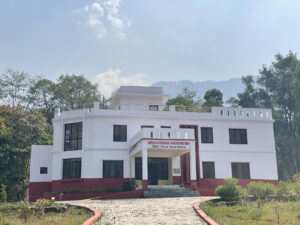
Sales House: The medicinal and ornamental plants for sale are housed in this building, which is close to the main entrance gate of the garden.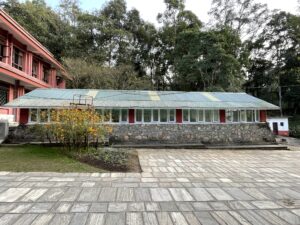
Vertical Gardens: The NBG has always had vertical gardens in the form of pergola harboring Wisteria sinensis, and green gates, walls and fences consisting of Cissampelos pareira, Dolichandra unguis-cati, Hedera nepalensis, Jasminum mesnyi, Rosa banksiae, Trachelospermum jasminoides, etc. However, vertical gardens employing panel support (i.e., metallic frame) and well-managed plastic pots with water facilities was introduced to NBG in 2021 AD. Technically, they are known as living wall systems or modular green walls. Two such vertical gardens with panel support can be seen in the NBG, one near the garden’s main entrance gate, and the other inside the Special Garden. It has become a new attraction center for visitors inside the NBG.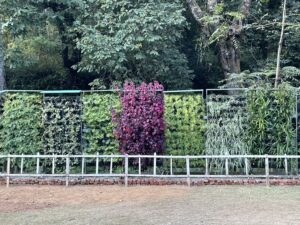
Natural Forest and Wetlands: The garden is surrounded by a natural forest consisting of Alnus nepalensis, Castanopsis indica, and Schima wallichii, among others, and a natural stream runs through it adding beauty to the garden. Around the flowing stream are wetlands, and the garden has a few concrete ponds and ponds that have been preserved naturally.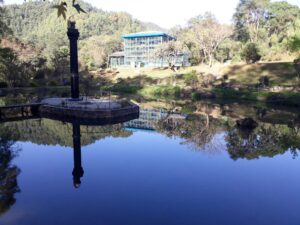
Plant Landscape and Thematic Gardens: Aquatic plant garden, Arboretum, Biodiversity education garden, Canna garden, Conservation and education garden, Coronation pond and its surroundings, Coronation temple and its surroundings, Edible plant garden, Ethnobotanical garden, Fern garden, Hedge garden, Indigenous ornamental plant garden, Japanese style garden, Lily garden, Mesozoic avenue, Nepalensis-Historic Garden, Orchid garden, Physic garden, Pinetum, Rock garden, Rose garden, Sand Garden, School Education Garden, Special garden, Taxonomic family garden (Bentham and Hooker’s classification system), Terrace garden, Threatened plant garden, Tropical plant garden, Vertical garden (including pergola), VVIP plantation garden, Wetland garden, and Wild plant garden.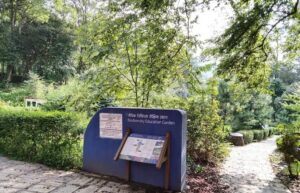
Tallest tree of NBG: Eucalyptus alba (Height 46.3 m; Measurement date: 21 July 2021; Measured by: Forest Research and Training Centre, Babarmahal, Kathmandu). Common name: white gum, khaki gum or poplar gum. Local name in Nepal: masala (मसला), sapeta (सपेता) or vicks (भिक्स). Family: Myrtaceae. Location: Inside the Japanese style garden.
Rhododendron arboreum: The trees of Rhododendron arboreum, the national flower of Nepal, can be seen in the Special Garden’s north side and in the Biodiversity Education Garden’s northwest corner. Planted also near the main entrance gate, it is also the “Welcome Tree” of this botanical garden. It is locally known as laligurans (लालीगुराँस) in Nepal and was declared as the country’s national flower with the promulgation of Nepalese constitution in 2019 BS.
Waterfalls: The NBG has two beautiful waterfalls, one in front of the Special Garden, and the other by the side of the Coronation Pond.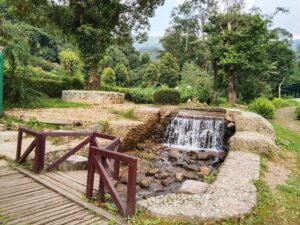
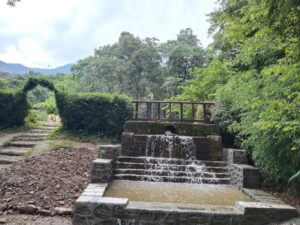
Water Fountain: A splendid water fountain located at the center of the Special Garden, also known as the Special Garden Water Fountain, is the main attraction center of this garden for the visitors.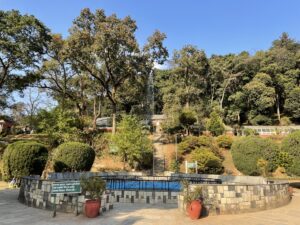
Electric Vehicle: Two electric vehicles are available for visitors in the garden. After making necessary payments, visitors can enjoy the ride for two kilometers through this lovely botanical garden and take in the stunning scenery.
Wheelchair-Friendly Trails: Inside this botanical garden, there are wheelchair-friendly trails in the Physical Garden, Biodiversity Education Garden, and Special Garden. The garden offers two wheelchairs for free to visitors with disabilities and senior citizens.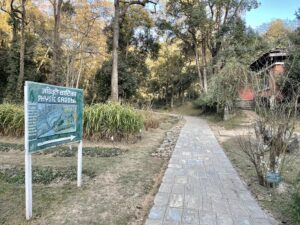
Changing Rooms: In this botanical garden, there are four rooms available for changing clothes. Two of these rooms (one each for boys and girls) are located in front of the main entrance gate, while the other two (one each for boys and girls) are situated beside the entrance gate of the Special Garden.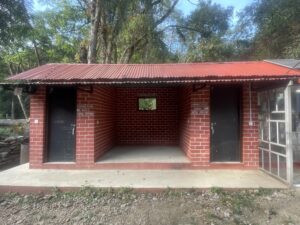
Water ATM: Visitors can purchase water at a reasonable price at the water ATM that is located in front of the main entrance gate.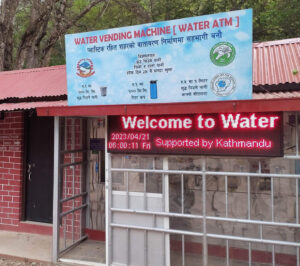
Computerized ticket: Computerized ticketing is available for visitors entering the garden through the main entrance gate. Computerized ticking for the garden was created by IT Home Pvt. Ltd.
Francis Bacon: “Garden is the purest of human pleasures”


